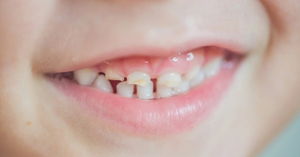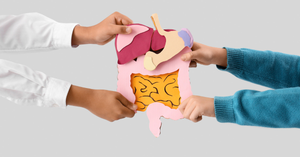Teething Symptoms
During the teething phase, infants can experience a range of symptoms. Recognizing these can help parents understand what their child is going through and take appropriate measures.
- Drooling: Excessive drooling is one of the first signs of teething. It can start as early as two months before the first tooth appears.
- Chewing and Biting: Infants often chew on objects to relieve the pressure and pain in their gums.
- Irritability and Fussiness: The discomfort from emerging teeth can make babies more irritable than usual.
- Sore and Swollen Gums: Gums may become red and swollen as teeth push through.
- Sleep Disturbances: Pain and discomfort can interfere with a baby’s sleep.
- Loss of Appetite: Some infants may eat less due to gum soreness.
- Mild Fever: A slight increase in body temperature can occur but should not be very high.
Conditions During Teething
Understanding the different conditions associated with teething can help in managing your child’s discomfort effectively.
- Gum Sensitivity: Teething causes inflammation in the gums, making them tender and sensitive. This can be alleviated by gentle gum massages or using teething rings.
- Increased Salivation: The production of more saliva is a natural response to teething and helps soothe irritated gums. However, it can lead to drool rash around the mouth and chin, which can be managed by keeping the area dry.
- Behavioral Changes: Babies may become clingier and more irritable due to the pain. Providing comfort and distraction can help mitigate this behavior.
- Teething Rash: Excessive drooling can cause a rash on the baby’s face. Using a gentle barrier cream can prevent and treat this rash.
Teeth Eruption Sequencing
Understanding the sequence in which baby teeth erupt can help parents anticipate which teeth are coming in and when.
1. Lower Central Incisors (6-10 months): The two bottom front teeth are usually the first to appear.
2. Upper Central Incisors (8-12 months): These are followed by the two upper front teeth.
3. Upper Lateral Incisors (9-13 months): The next to come in are the teeth on either side of the upper front teeth.
4. Lower Lateral Incisors (10-16 months): Following this, the lateral incisors on the bottom appear.
5. First Molars (13-19 months): These are the first set of back teeth, appearing in both the upper and lower jaws.
6. Canines (Cuspids) (16-23 months): These are the pointed teeth next to the incisors.
7. Second Molars (23-33 months): The final set of teeth to erupt are the second molars at the back of the mouth.
Managing Teething Symptoms
There are several strategies to help alleviate teething symptoms and make the process more comfortable for your child.
- Teething Rings: Provide a safe object for your child to chew on.
- Cold Compresses: Chilled teething rings or a cold, wet washcloth can soothe sore gums.
- Gum Massage: Gently rubbing your baby’s gums with a clean finger can provide relief.
- Pain Relief Medication: Consult with a pediatrician before giving any medication.
- Maintaining Oral Hygiene: Clean your baby’s gums with a soft, damp cloth even before the teeth come in to promote oral health.
Conclusion
Teething is a natural yet challenging phase for both infants and parents. By understanding the teething symptoms and stages of tooth eruption, parents can better support their children through this developmental milestone. Regular dental check-ups from an early age can also ensure that your baby’s teeth are developing healthily.








Be the first one to comment on this story.